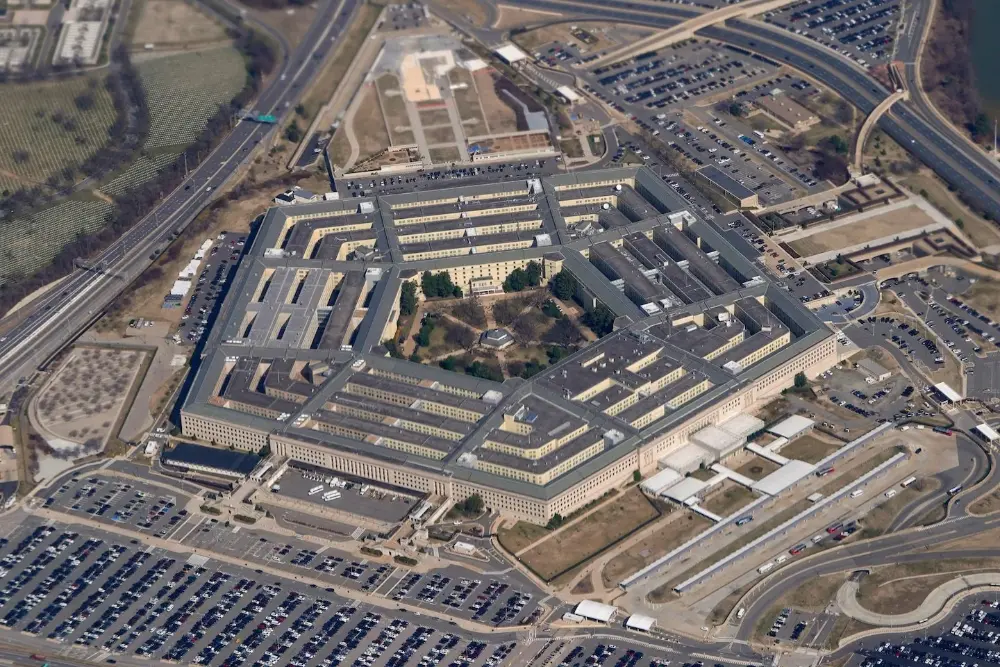
The US Department of Defense is opening its doors to small businesses.
At the end of 2022, the US Department of Defense decided to create a new division — the Office of Strategic Capital. As stated, it was to overcome the so-called “valley of death” that has long prevented the Pentagon from adopting new technologies.
“The Valley of Death” occurs within the realm of bureaucracy, where promising opportunities involving cutting-edge technologies, funded by the US Department of Defense, face a barrier preventing them from moving forward due to a failure to effectively bridge the gap between development and implementation.
The likely reason for this was the unsuccessful implementation of the Third Compensation Strategy introduced by ex-US Secretary of Defense Ash Carter in 2015. The rise of China’s military strength and technological advancements, as well as the lessons learned from the Ukrainian conflict, prompted the US military to reassess its policies, including the work with contractors.
For over a year, the Authority has been studying the problems with the existing gap and seems to have found a solution.
On March 9, 2024, the Pentagon formally issued an investment strategy that falls directly under the Office of Strategic Capital.
It notes that the Office “emphasizes financing investments to increase available capital, rather than using acquisition-based tools like contracts or grants to increase direct government spending on innovation for capabilities. The office is complementary to DoD’s existing approaches for increasing technological innovation. Current innovation organizations within DoD utilize grants and contracting for prototypes. In contrast, OSC focuses on capital programs for both investors and companies utilizing financial tools like loans and loan guarantees through partnerships with other federal departments or agencies. In turn, these capital programs attract and scale private capital for investments in critical technologies. OSC will utilize the best
practices of more than 100 current federal credit programs”
This means that the Pentagon is becoming a banking entity issuing bonds and loans to invest in a sector of interest to them. It’s evident that we are not discussing a well-established industry that caters to the influential players within the US military-industrial complex. Companies like Lockheed Martin, Boeing, RTX (formerly Raytheon), General Dynamics, Northrop Grumman, and L3Harris Technologies hold significant sway in key government agencies such as the White House, the State Department, and the Pentagon. These companies play a crucial role in developing weapons systems and platforms. Collaboration with them will continue with the established model. We are talking about a cluster of so-called venture capital, which is mainly associated with Silicon Valley. It’s where most startups in the US are launched, some of which then grow into mega-corporations. And now, amidst certain funding problems, broken supply chains and industrial base, they have a good opportunity to lean on the military. Although the money, based on the data in the new Strategy, will be taken mainly from the pockets of taxpayers.
The Strategy prescribes the following algorithm of actions:
- Funding for expenses incurred from the risk calculation for the investment program (measured at 5%) is provided by the relevant department or agency.
- The Treasury provides the borrower with the remaining 95% not covered by the 5% risk calculation determined for the respective department or agency program.
- Private capital providers shall secure extra investment funds for programs associated with small business investment companies. This effort is reflected as aiming to double the amount extended by the US government.
14 areas have been identified to actively attract capital for military needs. These include nanomaterials and metamaterials; biotechnology; bioenergy; 5G and open radio network technologies; sensing; microelectronics; assembly technologies; quantum science – computing, security and sensors; batteries; and space technologies.
Apparently, the decision to create such funding mechanisms for the Pentagon’s benefit was preceded by the experience of previous years.
As said in the article “How Silicon Valley Learned to Love America, Drones and Glory” published in the Washington Post – “Between 2021 and 2023, investors funneled $108 billion into defense tech companies building a range of cutting-edge tools, including hypersonic missiles, performance-enhancing wearables and satellite surveillance systems, according to the data firm PitchBook, which predicts the defense tech market will surge to $184.7 billion by 2027.”
The article highlights forward-thinking companies such as Andreessen Horowitz, Anduril, Shield AI, and Skydio that are seeking opportunities in the U.S. defense sector. Additionally, firms like Apollo Defense are actively recruiting young professionals and encouraging students to launch their own defense technology startups or pursue careers in the field.
By the way, rotations from the military sector to the field of promising technologies and vice versa are common for the US. One can think of Regina Duncan, who worked at DARPA, the Defense Advanced Research Projects Agency, from 1996 before moving to Google in 2012. And former Apple deputy CEO Tim Cook has been named to lead the Defense Innovation Division, reporting directly to US Secretary of Defense Lloyd Austin.
Finally, the Pentagon’s contract with Ilon Musk’s SpaceX to provide the Ukrainian armed forces with Starlink terminals for communications comes to mind, which turned out to be just the tip of the iceberg. As recently revealed, there was also a USD 1.8 billion “secret contract” with the National Space Intelligence Agency, a Pentagon subordinate. Sources said the satellites can track targets on the ground “virtually anywhere in the world” and instantly transmit data to intelligence and military officials.
Given the previously announced plans to launch hundreds of additional satellites into low-Earth orbit in the near future, the recent investments in Ilon Musk’s company appear to be another instance of the Pentagon expanding its influence within the tech-industry. This trend is similar to the partnerships the Pentagon formed with companies like Google, Amazon, and Facebook, where they collaborated on various projects ranging from information operations to the development of specialized computer programs and applications.
Considering the extensive history of political decision-making in the USA and the fundamental concept of the iron triangle — which encompasses the connections between Congress, the bureaucracy, and interest groups — it can be deduced that this new partnership primarily benefits venture capital. It’s still uncertain whether the Pentagon will successfully integrate these innovations while navigating its existing rules and limitations, or if it will be constrained by a new relationship model. In any case, such cooperation will militarize the hundreds of small firms and companies who will see this as an opportunity for their own profit. Just like with SpaceX, it is inevitable that there will be doubts surrounding any new company claiming to make positive impacts on society, with speculation arising about potential ties to the DoD and its role in supporting military operations.














Comments